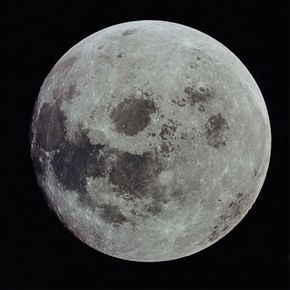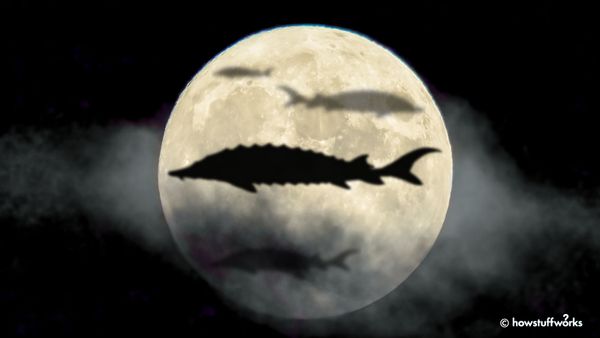Geologic History of the Moon
Based on analyses of the rocks, crater densities and surface features, geologists came up with the following geologic history of the moon:
- After the impact (about 4.45 billion years ago), the newly formed moon had a huge magma ocean over a solid interior.
- As the magma cooled, iron and magnesium silicates crystallized and sank to the bottom. Plagioclase feldspar crystallized and floated up to form the anorthosite lunar crust.
- Later (about 4 billion years ago), magma rose and infiltrated the lunar crust, where they reacted chemically to form the basalt. The magma ocean continued to cool, forming the lithosphere (which is like the material in the Earth's mantle). As the moon lost heat, the asthenosphere (the next layer in) shrank toward the core and the lithosphere became very large. These events led to a model of the moon's interior that is very different from that of the Earth. Lunar Behavior The moon is thought to influence our daily life and moods, possibly even causing odd behavior. In fact, it's the inspiration for the word "lunatic." Werewolf aficionados, of course, know that a full moon triggers terrifying transformations. And hospital and emergency personnel tell of more crimes, accidents and births during a full moon -- but the evidence for this is mostly anecdotal rather than statistical.
- From about 4.6 to 3.9 billion years ago, the moon was intensely bombarded by meteors and other large objects. These impacts modified the lunar crust and gave rise to the large, densely cratered surface in the lunar highlands. Some of these bombardments produced large, multi-ringed basins and mountains.
- When the bombardment ceased, lava flowed from the inside of the moon through volcanoes and cracks in the crust. This lava filled the maria and cooled to become the mare basalts. This period of lunar volcanism lasted from about 3.7 billion years to 2.5 billion years ago. Much of the moon's heat was lost during this period. (Because the moon's crust is slightly thinner on the side that faces the Earth, lava could erupt more easily to fill the maria basins. This explains why there are more maria on the near side of the moon compared to the far side.)
- Once the volcanic period ended, most of the moon's internal heat was gone, so there was no major geologic activity -- meteor impacts have been the only major geologic factor at work on the moon. These impacts have not been as intense as in earlier periods of the moon's history; bombardments have generally been declining throughout the solar system. However, the meteoric bombardment that continues today has produced some large craters on the maria (like Tycho and Copernicus) and the fine regolith (soil) that covers the lunar surface.
Let's look at some of the phenomena involving the moon's orbit.
Advertisement



